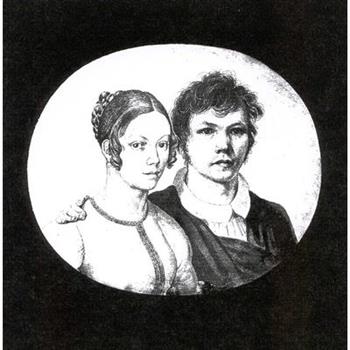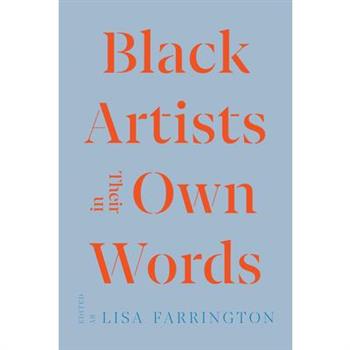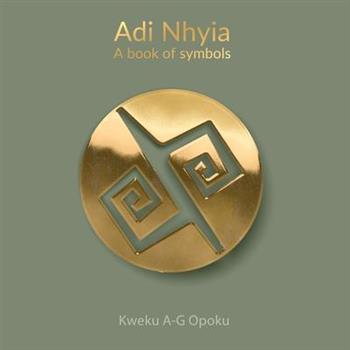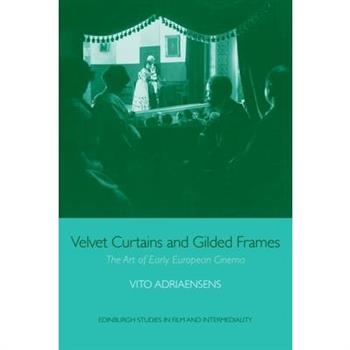The Modern Poster
"The Modern Poster" explores the burgeoning art form of the late 19th century, showcasing the aesthetic and cultural significance of posters as a medium. Authored by Ars癡ne Alexandre, Marion Harry Spielmann, Henry Cuyler Bunner, and Augusto Floriano Jaccaci, this work delves into the techniques, artists, and social impact of poster design during its golden age. Illustrated with numerous examples, the book examines the role of posters in advertising, propaganda, and artistic expression. From the vibrant streets of Paris to the emerging urban landscapes of America, "The Modern Poster" captures the dynamism of a visual revolution. Discover the enduring legacy of this influential art form and its continued relevance in contemporary design.This work has been selected by scholars as being culturally important, and is part of the knowledge base of civilization as we know it. This work was reproduced from the original artifact, and remains as true to the original work as possible. Therefore, you will see the original copyright references, library stamps (as most of these works have been housed in our most important libraries around the world), and other notations in the work.This work is in the public domain in the United States of America, and possibly other nations. Within the United States, you may freely copy and distribute this work, as no entity (individual or corporate) has a copyright on the body of the work.As a reproduction of a historical artifact, this work may contain missing or blurred pages, poor pictures, errant marks, etc. Scholars believe, and we concur, that this work is important enough to be preserved, reproduced, and made generally available to the public. We appreciate your support of the preservation process, and thank you for being an important part of keeping this knowledge alive and relevant.
The Barbizon School of Painters
"The Barbizon School of Painters" explores the influential group of mid-19th century French artists who revolutionized landscape painting. This book delves into the lives and works of key figures such as Th矇odore Rousseau, Jean-Fran癟ois Millet, and Charles-Fran癟ois Daubigny, examining their shared commitment to painting directly from nature. David Croal Thomson provides insights into the Barbizon School's artistic techniques, philosophical underpinnings, and lasting impact on the development of Impressionism and modern art. Readers will gain a comprehensive understanding of the Barbizon School's significance in art history and its enduring appeal to artists and art enthusiasts alike.This work has been selected by scholars as being culturally important, and is part of the knowledge base of civilization as we know it. This work was reproduced from the original artifact, and remains as true to the original work as possible. Therefore, you will see the original copyright references, library stamps (as most of these works have been housed in our most important libraries around the world), and other notations in the work.This work is in the public domain in the United States of America, and possibly other nations. Within the United States, you may freely copy and distribute this work, as no entity (individual or corporate) has a copyright on the body of the work.As a reproduction of a historical artifact, this work may contain missing or blurred pages, poor pictures, errant marks, etc. Scholars believe, and we concur, that this work is important enough to be preserved, reproduced, and made generally available to the public. We appreciate your support of the preservation process, and thank you for being an important part of keeping this knowledge alive and relevant.
The Magazine Of Art
"The Magazine Of Art, Volume 26" offers a comprehensive look at the art world of its time. This volume provides readers with insightful articles, reviews, and commentary on various aspects of art, including painting, sculpture, architecture, and design. Explore detailed discussions of significant artists, movements, and exhibitions that shaped artistic expression. This historical record provides valuable insights into the cultural and aesthetic values of the era, making it an indispensable resource for art historians, students, and enthusiasts alike. Delve into the rich tapestry of artistic innovation and critical discourse that defined the period.This work has been selected by scholars as being culturally important, and is part of the knowledge base of civilization as we know it. This work was reproduced from the original artifact, and remains as true to the original work as possible. Therefore, you will see the original copyright references, library stamps (as most of these works have been housed in our most important libraries around the world), and other notations in the work.This work is in the public domain in the United States of America, and possibly other nations. Within the United States, you may freely copy and distribute this work, as no entity (individual or corporate) has a copyright on the body of the work.As a reproduction of a historical artifact, this work may contain missing or blurred pages, poor pictures, errant marks, etc. Scholars believe, and we concur, that this work is important enough to be preserved, reproduced, and made generally available to the public. We appreciate your support of the preservation process, and thank you for being an important part of keeping this knowledge alive and relevant.
Loan Exhibition Of Paintings By William M. Chase
Explore the remarkable talent of William Merritt Chase in this catalogue from a loan exhibition held at the Metropolitan Museum of Art. Featuring a selection of his finest paintings, the exhibition celebrated Chase's contributions to American Impressionism and his mastery of portraiture, landscapes, and still life. The catalogue offers insights into Chase's techniques, influences, and the historical context of his work, appealing to art enthusiasts, scholars, and anyone interested in American art history. Discover the enduring legacy of one of America's most celebrated artists through this meticulously curated collection.This work has been selected by scholars as being culturally important, and is part of the knowledge base of civilization as we know it. This work was reproduced from the original artifact, and remains as true to the original work as possible. Therefore, you will see the original copyright references, library stamps (as most of these works have been housed in our most important libraries around the world), and other notations in the work.This work is in the public domain in the United States of America, and possibly other nations. Within the United States, you may freely copy and distribute this work, as no entity (individual or corporate) has a copyright on the body of the work.As a reproduction of a historical artifact, this work may contain missing or blurred pages, poor pictures, errant marks, etc. Scholars believe, and we concur, that this work is important enough to be preserved, reproduced, and made generally available to the public. We appreciate your support of the preservation process, and thank you for being an important part of keeping this knowledge alive and relevant.
Oesers Neueste Allegoriegem瓣lde
Explore the allegorical paintings of Franz Wilhelm Kreuchauf in "Oesers Neueste Allegoriegem瓣lde." This book delves into the themes, symbolism, and artistic techniques employed in Kreuchauf's work, offering readers a comprehensive understanding of his contribution to European art. It offers a critical analysis of the artist's style and the broader context of allegorical painting in his time. For art enthusiasts, historians, and students alike, this volume provides valuable insights into a significant body of work.This work has been selected by scholars as being culturally important, and is part of the knowledge base of civilization as we know it. This work was reproduced from the original artifact, and remains as true to the original work as possible. Therefore, you will see the original copyright references, library stamps (as most of these works have been housed in our most important libraries around the world), and other notations in the work.This work is in the public domain in the United States of America, and possibly other nations. Within the United States, you may freely copy and distribute this work, as no entity (individual or corporate) has a copyright on the body of the work.As a reproduction of a historical artifact, this work may contain missing or blurred pages, poor pictures, errant marks, etc. Scholars believe, and we concur, that this work is important enough to be preserved, reproduced, and made generally available to the public. We appreciate your support of the preservation process, and thank you for being an important part of keeping this knowledge alive and relevant.
Contemporary Iranian Art
Iranian artists have been producing some of the world's mostthought-provoking and intellectually grounded artworks. In this landmark compendium, renowned art historian HamidKeshmirshekan provides a thorough review of contemporary art in Iran and showsthat the twentieth century was a crucial period in the country's art andculture, when the legacies of tradition and modernism where criticallyreassessed. Contemporary Iranian Art is an unprecedentedintroduction to Iran's vibrant art history over the past one hundred years.This fully revised and updated edition features more than 370 colourillustrations by the country's leading artists, including Mahmoud Bakhshi, Shadi Ghadirian, Barbad Golshiri, Marcos Grigorian, Farhad Moshiri, ShirinNeshat, Sohrab Sepehri, Mitra Tabrizian, Parviz Tanavoli and Charles HosseinZenderoudi.
Living New England Artists
"Living New England Artists: Biographical Sketches, Reproductions Of Original Drawings And Paintings By Each Artist" offers a fascinating glimpse into the vibrant art scene of early 20th-century New England. This collection showcases the work and lives of prominent artists from the region, providing biographical sketches alongside reproductions of their original drawings and paintings. Frank Torrey Robinson's work captures the essence of the era, highlighting the diverse styles and artistic visions that flourished within New England's cultural landscape. This volume serves as both a historical record and a celebration of artistic talent, offering valuable insights into the lives and works of these important figures. Art enthusiasts, historians, and anyone interested in the cultural heritage of New England will find this book to be an invaluable resource. Discover the enduring legacy of these artists and their contributions to American art history.This work has been selected by scholars as being culturally important, and is part of the knowledge base of civilization as we know it. This work was reproduced from the original artifact, and remains as true to the original work as possible. Therefore, you will see the original copyright references, library stamps (as most of these works have been housed in our most important libraries around the world), and other notations in the work.This work is in the public domain in the United States of America, and possibly other nations. Within the United States, you may freely copy and distribute this work, as no entity (individual or corporate) has a copyright on the body of the work.As a reproduction of a historical artifact, this work may contain missing or blurred pages, poor pictures, errant marks, etc. Scholars believe, and we concur, that this work is important enough to be preserved, reproduced, and made generally available to the public. We appreciate your support of the preservation process, and thank you for being an important part of keeping this knowledge alive and relevant.
Kunst Und K?1/4nstler In K繹ln
"Kunst Und K?1/4nstler In K繹ln" explores the rich artistic heritage and the lives of artists in Cologne, Germany. This historical account delves into the artistic contributions and cultural significance of Cologne's artistic community. The book provides insights into the art scene, the lives of prominent artists, and the historical context that shaped their work.This work has been selected by scholars as being culturally important, and is part of the knowledge base of civilization as we know it. This work was reproduced from the original artifact, and remains as true to the original work as possible. Therefore, you will see the original copyright references, library stamps (as most of these works have been housed in our most important libraries around the world), and other notations in the work.This work is in the public domain in the United States of America, and possibly other nations. Within the United States, you may freely copy and distribute this work, as no entity (individual or corporate) has a copyright on the body of the work.As a reproduction of a historical artifact, this work may contain missing or blurred pages, poor pictures, errant marks, etc. Scholars believe, and we concur, that this work is important enough to be preserved, reproduced, and made generally available to the public. We appreciate your support of the preservation process, and thank you for being an important part of keeping this knowledge alive and relevant.
Oesers Neueste Allegoriegem瓣lde
Explore the allegorical paintings of Franz Wilhelm Kreuchauf in "Oesers Neueste Allegoriegem瓣lde." This book delves into the themes, symbolism, and artistic techniques employed in Kreuchauf's work, offering readers a comprehensive understanding of his contribution to European art. It offers a critical analysis of the artist's style and the broader context of allegorical painting in his time. For art enthusiasts, historians, and students alike, this volume provides valuable insights into a significant body of work.This work has been selected by scholars as being culturally important, and is part of the knowledge base of civilization as we know it. This work was reproduced from the original artifact, and remains as true to the original work as possible. Therefore, you will see the original copyright references, library stamps (as most of these works have been housed in our most important libraries around the world), and other notations in the work.This work is in the public domain in the United States of America, and possibly other nations. Within the United States, you may freely copy and distribute this work, as no entity (individual or corporate) has a copyright on the body of the work.As a reproduction of a historical artifact, this work may contain missing or blurred pages, poor pictures, errant marks, etc. Scholars believe, and we concur, that this work is important enough to be preserved, reproduced, and made generally available to the public. We appreciate your support of the preservation process, and thank you for being an important part of keeping this knowledge alive and relevant.
Katalog Der Kgl. Gem瓣lde-galerie In Schleissheim
Explore the rich artistic heritage of the Kgl. Gem瓣lde-galerie in Schleissheim with this comprehensive catalog. Detailing the gallery's extensive collection, this volume offers insights into European art history and provides a valuable resource for art enthusiasts and scholars alike. Discover the works of renowned masters and lesser-known artists, all meticulously documented within these pages. A timeless guide to a celebrated collection.This work has been selected by scholars as being culturally important, and is part of the knowledge base of civilization as we know it. This work was reproduced from the original artifact, and remains as true to the original work as possible. Therefore, you will see the original copyright references, library stamps (as most of these works have been housed in our most important libraries around the world), and other notations in the work.This work is in the public domain in the United States of America, and possibly other nations. Within the United States, you may freely copy and distribute this work, as no entity (individual or corporate) has a copyright on the body of the work.As a reproduction of a historical artifact, this work may contain missing or blurred pages, poor pictures, errant marks, etc. Scholars believe, and we concur, that this work is important enough to be preserved, reproduced, and made generally available to the public. We appreciate your support of the preservation process, and thank you for being an important part of keeping this knowledge alive and relevant.
Illustrations Of Monumental Brasses
"Illustrations Of Monumental Brasses" is a detailed study of monumental brasses, a significant form of medieval and early modern funerary art. Published by the Ecclesiological Society, this volume presents a comprehensive overview of brasses found primarily in Europe, focusing on their artistic and historical importance. Monumental brasses, being essentially engraved metal plates affixed to tombs, provide invaluable insights into the lives, costumes, and heraldry of the individuals they commemorate. This work meticulously documents various examples of these brasses, offering detailed illustrations and descriptions that capture the intricate designs and inscriptions. It serves as an essential resource for historians, art enthusiasts, and anyone interested in the cultural and artistic practices of the past. The book not only preserves visual records of these historical artifacts but also interprets their symbolic meanings and historical context. This work has been selected by scholars as being culturally important, and is part of the knowledge base of civilization as we know it. This work was reproduced from the original artifact, and remains as true to the original work as possible. Therefore, you will see the original copyright references, library stamps (as most of these works have been housed in our most important libraries around the world), and other notations in the work.This work is in the public domain in the United States of America, and possibly other nations. Within the United States, you may freely copy and distribute this work, as no entity (individual or corporate) has a copyright on the body of the work.As a reproduction of a historical artifact, this work may contain missing or blurred pages, poor pictures, errant marks, etc. Scholars believe, and we concur, that this work is important enough to be preserved, reproduced, and made generally available to the public. We appreciate your support of the preservation process, and thank you for being an important part of keeping this knowledge alive and relevant.
International Studio, Volume 60, Issues 237-240
Explore the world of art through the discerning lens of "International Studio, Volume 60, Issues 237-240." This compilation offers a rich tapestry of artistic expression, insightful criticism, and historical context. Edited by luminaries such as Charles Holme, Guy Eglinton, Peyton Boswell, William Bernard McCormick, and Henry James Whigham, this volume showcases diverse artistic movements and provides thoughtful commentary on the evolving landscape of visual arts.Delve into a collection that captures the essence of international art, offering readers a glimpse into the creative dialogues and aesthetic innovations of the period. A valuable resource for art historians, critics, and enthusiasts alike, this volume preserves a significant chapter in the ongoing story of artistic endeavor and its critical reception.This work has been selected by scholars as being culturally important, and is part of the knowledge base of civilization as we know it. This work was reproduced from the original artifact, and remains as true to the original work as possible. Therefore, you will see the original copyright references, library stamps (as most of these works have been housed in our most important libraries around the world), and other notations in the work.This work is in the public domain in the United States of America, and possibly other nations. Within the United States, you may freely copy and distribute this work, as no entity (individual or corporate) has a copyright on the body of the work.As a reproduction of a historical artifact, this work may contain missing or blurred pages, poor pictures, errant marks, etc. Scholars believe, and we concur, that this work is important enough to be preserved, reproduced, and made generally available to the public. We appreciate your support of the preservation process, and thank you for being an important part of keeping this knowledge alive and relevant.
Lely And Kneller
Lely and Kneller delves into the lives and artistic contributions of two pivotal figures in 17th and early 18th-century British portraiture: Sir Peter Lely and Sir Godfrey Kneller. This meticulously researched volume by Charles Henry Collins Baker offers a detailed examination of their careers, techniques, and the impact they had on the development of art in England. Exploring their individual styles and the historical context in which they worked, the book provides insights into the artistic trends of the time and the patronage system that shaped their careers. From Lely's influence in establishing a distinctive style of portraiture to Kneller's role in capturing the likenesses of royalty and prominent figures, this book offers a comprehensive overview of their artistic legacies. Lely and Kneller is an essential resource for art historians, students, and anyone interested in the history of British art.This work has been selected by scholars as being culturally important, and is part of the knowledge base of civilization as we know it. This work was reproduced from the original artifact, and remains as true to the original work as possible. Therefore, you will see the original copyright references, library stamps (as most of these works have been housed in our most important libraries around the world), and other notations in the work.This work is in the public domain in the United States of America, and possibly other nations. Within the United States, you may freely copy and distribute this work, as no entity (individual or corporate) has a copyright on the body of the work.As a reproduction of a historical artifact, this work may contain missing or blurred pages, poor pictures, errant marks, etc. Scholars believe, and we concur, that this work is important enough to be preserved, reproduced, and made generally available to the public. We appreciate your support of the preservation process, and thank you for being an important part of keeping this knowledge alive and relevant.
Arthvr Atkins
Explore the artistic vision and personal reflections of Arthur Atkins in this collection of letters, "Arthur Atkins: Extracts From The Letters With Notes On Paintings And Landscape: Written During The Period Of His Work As A Painter In The Last Two Years Of His Life, 1896: 1898." This compilation offers a unique glimpse into the artist's world during the final years of his life, revealing his thoughts on art, nature, and the creative process.Through his correspondence, readers gain insight into Atkins's perspective as a painter, his observations of the landscape, and the inspiration behind his work. This volume, presented by Stanley-Taylor Company of San Francisco, is a valuable resource for art historians, students, and anyone interested in late 19th-century art and the intimate thoughts of an artist.This work has been selected by scholars as being culturally important, and is part of the knowledge base of civilization as we know it. This work was reproduced from the original artifact, and remains as true to the original work as possible. Therefore, you will see the original copyright references, library stamps (as most of these works have been housed in our most important libraries around the world), and other notations in the work.This work is in the public domain in the United States of America, and possibly other nations. Within the United States, you may freely copy and distribute this work, as no entity (individual or corporate) has a copyright on the body of the work.As a reproduction of a historical artifact, this work may contain missing or blurred pages, poor pictures, errant marks, etc. Scholars believe, and we concur, that this work is important enough to be preserved, reproduced, and made generally available to the public. We appreciate your support of the preservation process, and thank you for being an important part of keeping this knowledge alive and relevant.
Early English, Dutch, And Flemish Paintings At The Blakeslee Galleries
"Early English, Dutch, And Flemish Paintings At The Blakeslee Galleries" showcases a curated collection of significant artworks. This volume offers insight into the styles and techniques of artists from England, the Netherlands, and Flanders. Featuring detailed descriptions and provenance information where available, this catalog provides valuable information for art historians, collectors, and enthusiasts. The publication serves as a historical record of the Blakeslee Galleries' notable holdings and their contribution to the art world.This work has been selected by scholars as being culturally important, and is part of the knowledge base of civilization as we know it. This work was reproduced from the original artifact, and remains as true to the original work as possible. Therefore, you will see the original copyright references, library stamps (as most of these works have been housed in our most important libraries around the world), and other notations in the work.This work is in the public domain in the United States of America, and possibly other nations. Within the United States, you may freely copy and distribute this work, as no entity (individual or corporate) has a copyright on the body of the work.As a reproduction of a historical artifact, this work may contain missing or blurred pages, poor pictures, errant marks, etc. Scholars believe, and we concur, that this work is important enough to be preserved, reproduced, and made generally available to the public. We appreciate your support of the preservation process, and thank you for being an important part of keeping this knowledge alive and relevant.
The Burgis Views of New York and Boston
"The Burgis Views of New York and Boston" presents a captivating collection of historical cityscapes. Offering a glimpse into the architectural and cultural landscapes of early 20th-century America, this volume showcases meticulously rendered views of two of the nation's most iconic cities. John Henry Edmonds' work provides invaluable insights into the urban development and societal nuances of New York and Boston during a transformative period. A must-have for historians, art enthusiasts, and anyone captivated by the rich tapestry of American urban history.This work has been selected by scholars as being culturally important, and is part of the knowledge base of civilization as we know it. This work was reproduced from the original artifact, and remains as true to the original work as possible. Therefore, you will see the original copyright references, library stamps (as most of these works have been housed in our most important libraries around the world), and other notations in the work.This work is in the public domain in the United States of America, and possibly other nations. Within the United States, you may freely copy and distribute this work, as no entity (individual or corporate) has a copyright on the body of the work.As a reproduction of a historical artifact, this work may contain missing or blurred pages, poor pictures, errant marks, etc. Scholars believe, and we concur, that this work is important enough to be preserved, reproduced, and made generally available to the public. We appreciate your support of the preservation process, and thank you for being an important part of keeping this knowledge alive and relevant.
A New Exhibition
Explore the groundbreaking "A New Exhibition", a record of the Great Exhibition of 1851. Held in London's Crystal Palace, this unprecedented event showcased the industrial achievements and cultural innovations of nations from around the globe. "A New Exhibition" offers insights into the Victorian era's fascination with progress, technology, and international collaboration.Discover detailed accounts of the exhibits, the organizers, and the millions of visitors who marveled at the displays. This volume captures the spirit of an age defined by rapid change and boundless optimism, making it an invaluable resource for historians, art enthusiasts, and anyone interested in the legacy of the Industrial Revolution. Relive the grandeur and impact of the Great Exhibition through this historical record.This work has been selected by scholars as being culturally important, and is part of the knowledge base of civilization as we know it. This work was reproduced from the original artifact, and remains as true to the original work as possible. Therefore, you will see the original copyright references, library stamps (as most of these works have been housed in our most important libraries around the world), and other notations in the work.This work is in the public domain in the United States of America, and possibly other nations. Within the United States, you may freely copy and distribute this work, as no entity (individual or corporate) has a copyright on the body of the work.As a reproduction of a historical artifact, this work may contain missing or blurred pages, poor pictures, errant marks, etc. Scholars believe, and we concur, that this work is important enough to be preserved, reproduced, and made generally available to the public. We appreciate your support of the preservation process, and thank you for being an important part of keeping this knowledge alive and relevant.
A Catalogue Of The Portland Museum
"A Catalogue Of The Portland Museum" offers a detailed inventory of the artifacts and artworks housed within this historical London institution. Compiled under the direction of Skinner and the Portland Museum, the catalogue provides invaluable insights into the museum's diverse collections, reflecting the artistic and cultural tastes of its time. This book serves as a vital resource for art historians, collectors, and anyone interested in the provenance and study of historical collections. It offers a glimpse into a bygone era, preserving the legacy of the Portland Museum for future generations. A must-have for anyone studying art history or the history of museums and collecting.This work has been selected by scholars as being culturally important, and is part of the knowledge base of civilization as we know it. This work was reproduced from the original artifact, and remains as true to the original work as possible. Therefore, you will see the original copyright references, library stamps (as most of these works have been housed in our most important libraries around the world), and other notations in the work.This work is in the public domain in the United States of America, and possibly other nations. Within the United States, you may freely copy and distribute this work, as no entity (individual or corporate) has a copyright on the body of the work.As a reproduction of a historical artifact, this work may contain missing or blurred pages, poor pictures, errant marks, etc. Scholars believe, and we concur, that this work is important enough to be preserved, reproduced, and made generally available to the public. We appreciate your support of the preservation process, and thank you for being an important part of keeping this knowledge alive and relevant.
Annual American Exhibition [of] Paintings And Sculpture, Volumes 11-17
This collection comprises volumes 11 through 17 of the exhibition catalogs from the Annual American Exhibition of Paintings and Sculpture held at the Art Institute of Chicago. A valuable resource for art historians, collectors, and enthusiasts, these volumes offer a comprehensive overview of American artistic trends and talents during the period they cover. Each volume meticulously documents the artworks displayed, providing insights into the artists, their techniques, and the prevailing aesthetic sensibilities of the time. Featuring a wide array of paintings and sculptures, these exhibition catalogs capture the vibrancy and diversity of the American art scene. From emerging artists to established masters, the "Annual American Exhibition" served as a platform for showcasing the best in American visual arts. These volumes stand as a historical record of the evolving landscape of American art, reflecting the cultural and social influences that shaped its development.This work has been selected by scholars as being culturally important, and is part of the knowledge base of civilization as we know it. This work was reproduced from the original artifact, and remains as true to the original work as possible. Therefore, you will see the original copyright references, library stamps (as most of these works have been housed in our most important libraries around the world), and other notations in the work.This work is in the public domain in the United States of America, and possibly other nations. Within the United States, you may freely copy and distribute this work, as no entity (individual or corporate) has a copyright on the body of the work.As a reproduction of a historical artifact, this work may contain missing or blurred pages, poor pictures, errant marks, etc. Scholars believe, and we concur, that this work is important enough to be preserved, reproduced, and made generally available to the public. We appreciate your support of the preservation process, and thank you for being an important part of keeping this knowledge alive and relevant.
Boston Painters, 1720-1940. [Exhibition Catalogue]
This exhibition catalogue, "Boston Painters, 1720-1940," offers a comprehensive overview of the artistic landscape of Boston from the early 18th century through the mid-20th century. Published in conjunction with an exhibition by the Boston University School of Fine and Applied Arts, the catalogue showcases a diverse range of artists and styles that contributed to the city's rich cultural heritage.From early portraitists to modern innovators, the catalogue provides valuable insights into the evolution of painting in Boston. It serves as an essential resource for art historians, collectors, and anyone interested in the history of American art and the unique artistic identity of Boston.This work has been selected by scholars as being culturally important, and is part of the knowledge base of civilization as we know it. This work was reproduced from the original artifact, and remains as true to the original work as possible. Therefore, you will see the original copyright references, library stamps (as most of these works have been housed in our most important libraries around the world), and other notations in the work.This work is in the public domain in the United States of America, and possibly other nations. Within the United States, you may freely copy and distribute this work, as no entity (individual or corporate) has a copyright on the body of the work.As a reproduction of a historical artifact, this work may contain missing or blurred pages, poor pictures, errant marks, etc. Scholars believe, and we concur, that this work is important enough to be preserved, reproduced, and made generally available to the public. We appreciate your support of the preservation process, and thank you for being an important part of keeping this knowledge alive and relevant.
Annual American Exhibition [of] Paintings And Sculpture, Volumes 11-17
This collection comprises volumes 11 through 17 of the exhibition catalogs from the Annual American Exhibition of Paintings and Sculpture held at the Art Institute of Chicago. A valuable resource for art historians, collectors, and enthusiasts, these volumes offer a comprehensive overview of American artistic trends and talents during the period they cover. Each volume meticulously documents the artworks displayed, providing insights into the artists, their techniques, and the prevailing aesthetic sensibilities of the time. Featuring a wide array of paintings and sculptures, these exhibition catalogs capture the vibrancy and diversity of the American art scene. From emerging artists to established masters, the "Annual American Exhibition" served as a platform for showcasing the best in American visual arts. These volumes stand as a historical record of the evolving landscape of American art, reflecting the cultural and social influences that shaped its development.This work has been selected by scholars as being culturally important, and is part of the knowledge base of civilization as we know it. This work was reproduced from the original artifact, and remains as true to the original work as possible. Therefore, you will see the original copyright references, library stamps (as most of these works have been housed in our most important libraries around the world), and other notations in the work.This work is in the public domain in the United States of America, and possibly other nations. Within the United States, you may freely copy and distribute this work, as no entity (individual or corporate) has a copyright on the body of the work.As a reproduction of a historical artifact, this work may contain missing or blurred pages, poor pictures, errant marks, etc. Scholars believe, and we concur, that this work is important enough to be preserved, reproduced, and made generally available to the public. We appreciate your support of the preservation process, and thank you for being an important part of keeping this knowledge alive and relevant.
Discourses Delivered To The Students Of The Royal Academy
Discourses Delivered to the Students of the Royal Academy, by Sir Joshua Reynolds, is a timeless collection of fifteen lectures offering profound insights into the principles and practice of art. Delivered to the students of the Royal Academy, these discourses reflect Reynolds's deep understanding of art history, his commitment to academic training, and his vision for the future of British art. Reynolds explores a wide range of topics, including the importance of studying the Old Masters, the role of imitation and invention, the significance of imagination and taste, and the relationship between art and nature. Through his eloquent prose and insightful observations, Reynolds provides valuable guidance for aspiring artists seeking to master their craft and achieve excellence in their work.This edition allows modern readers to rediscover Reynolds's enduring wisdom and appreciate his lasting contribution to the world of art.This work has been selected by scholars as being culturally important, and is part of the knowledge base of civilization as we know it. This work was reproduced from the original artifact, and remains as true to the original work as possible. Therefore, you will see the original copyright references, library stamps (as most of these works have been housed in our most important libraries around the world), and other notations in the work.This work is in the public domain in the United States of America, and possibly other nations. Within the United States, you may freely copy and distribute this work, as no entity (individual or corporate) has a copyright on the body of the work.As a reproduction of a historical artifact, this work may contain missing or blurred pages, poor pictures, errant marks, etc. Scholars believe, and we concur, that this work is important enough to be preserved, reproduced, and made generally available to the public. We appreciate your support of the preservation process, and thank you for being an important part of keeping this knowledge alive and relevant.
A Catalogue Of The Portland Museum
"A Catalogue Of The Portland Museum" offers a detailed inventory of the artifacts and artworks housed within this historical London institution. Compiled under the direction of Skinner and the Portland Museum, the catalogue provides invaluable insights into the museum's diverse collections, reflecting the artistic and cultural tastes of its time. This book serves as a vital resource for art historians, collectors, and anyone interested in the provenance and study of historical collections. It offers a glimpse into a bygone era, preserving the legacy of the Portland Museum for future generations. A must-have for anyone studying art history or the history of museums and collecting.This work has been selected by scholars as being culturally important, and is part of the knowledge base of civilization as we know it. This work was reproduced from the original artifact, and remains as true to the original work as possible. Therefore, you will see the original copyright references, library stamps (as most of these works have been housed in our most important libraries around the world), and other notations in the work.This work is in the public domain in the United States of America, and possibly other nations. Within the United States, you may freely copy and distribute this work, as no entity (individual or corporate) has a copyright on the body of the work.As a reproduction of a historical artifact, this work may contain missing or blurred pages, poor pictures, errant marks, etc. Scholars believe, and we concur, that this work is important enough to be preserved, reproduced, and made generally available to the public. We appreciate your support of the preservation process, and thank you for being an important part of keeping this knowledge alive and relevant.
Arthvr Atkins
Explore the artistic vision and personal reflections of Arthur Atkins in this collection of letters, "Arthur Atkins: Extracts From The Letters With Notes On Paintings And Landscape: Written During The Period Of His Work As A Painter In The Last Two Years Of His Life, 1896: 1898." This compilation offers a unique glimpse into the artist's world during the final years of his life, revealing his thoughts on art, nature, and the creative process.Through his correspondence, readers gain insight into Atkins's perspective as a painter, his observations of the landscape, and the inspiration behind his work. This volume, presented by Stanley-Taylor Company of San Francisco, is a valuable resource for art historians, students, and anyone interested in late 19th-century art and the intimate thoughts of an artist.This work has been selected by scholars as being culturally important, and is part of the knowledge base of civilization as we know it. This work was reproduced from the original artifact, and remains as true to the original work as possible. Therefore, you will see the original copyright references, library stamps (as most of these works have been housed in our most important libraries around the world), and other notations in the work.This work is in the public domain in the United States of America, and possibly other nations. Within the United States, you may freely copy and distribute this work, as no entity (individual or corporate) has a copyright on the body of the work.As a reproduction of a historical artifact, this work may contain missing or blurred pages, poor pictures, errant marks, etc. Scholars believe, and we concur, that this work is important enough to be preserved, reproduced, and made generally available to the public. We appreciate your support of the preservation process, and thank you for being an important part of keeping this knowledge alive and relevant.
A Catalogue Of The Pictures At Cowdray-house, The Seat Of The Right Honourable Lord Viscount Montague, Near Midhurst, Sussex
"A Catalogue Of The Pictures At Cowdray-house, The Seat Of The Right Honourable Lord Viscount Montague, Near Midhurst, Sussex" offers a detailed inventory of the artwork housed within Cowdray House. This catalogue provides a glimpse into the art collection of a prominent British estate, reflecting the tastes and acquisitions of the Montague family. Readers interested in art history, architectural history, and the social history of British estates will find this catalogue a valuable resource. It preserves a record of the paintings displayed at Cowdray House, offering insights into the artistic and cultural milieu of the time. This volume serves as a historical document, capturing a moment in the life of a significant country house and its contents.This work has been selected by scholars as being culturally important, and is part of the knowledge base of civilization as we know it. This work was reproduced from the original artifact, and remains as true to the original work as possible. Therefore, you will see the original copyright references, library stamps (as most of these works have been housed in our most important libraries around the world), and other notations in the work.This work is in the public domain in the United States of America, and possibly other nations. Within the United States, you may freely copy and distribute this work, as no entity (individual or corporate) has a copyright on the body of the work.As a reproduction of a historical artifact, this work may contain missing or blurred pages, poor pictures, errant marks, etc. Scholars believe, and we concur, that this work is important enough to be preserved, reproduced, and made generally available to the public. We appreciate your support of the preservation process, and thank you for being an important part of keeping this knowledge alive and relevant.
Men Of The Olo Stone Age
"Men Of The Olo Stone Age: Their Environment, Life And Art" explores the world of early humans during the Paleolithic era. Authored by Henry Fairfield Osborn, the book delves into the environment in which these people lived, offering insights into their daily lives and the remarkable art they produced. From tools and dwellings to cave paintings and sculptures, Osborn illuminates the ingenuity and creativity of our distant ancestors. This detailed study provides a valuable window into a pivotal period of human history.This work has been selected by scholars as being culturally important, and is part of the knowledge base of civilization as we know it. This work was reproduced from the original artifact, and remains as true to the original work as possible. Therefore, you will see the original copyright references, library stamps (as most of these works have been housed in our most important libraries around the world), and other notations in the work.This work is in the public domain in the United States of America, and possibly other nations. Within the United States, you may freely copy and distribute this work, as no entity (individual or corporate) has a copyright on the body of the work.As a reproduction of a historical artifact, this work may contain missing or blurred pages, poor pictures, errant marks, etc. Scholars believe, and we concur, that this work is important enough to be preserved, reproduced, and made generally available to the public. We appreciate your support of the preservation process, and thank you for being an important part of keeping this knowledge alive and relevant.
British Sporting Artists From Barlow to Herring
"British Sporting Artists From Barlow to Herring" explores the rich tradition of sporting art in Britain, focusing on key figures from Francis Barlow to the Herring family of painters. This comprehensive study delves into the historical context and artistic techniques employed by these artists, showcasing their contributions to the genre. Walter Shaw Sparrow provides insights into the evolution of sporting art, highlighting its significance in reflecting British sporting life and culture. The book examines the artists' depictions of various sports and animals, providing a valuable resource for art historians, collectors, and enthusiasts interested in British art and sporting history.This work has been selected by scholars as being culturally important, and is part of the knowledge base of civilization as we know it. This work was reproduced from the original artifact, and remains as true to the original work as possible. Therefore, you will see the original copyright references, library stamps (as most of these works have been housed in our most important libraries around the world), and other notations in the work.This work is in the public domain in the United States of America, and possibly other nations. Within the United States, you may freely copy and distribute this work, as no entity (individual or corporate) has a copyright on the body of the work.As a reproduction of a historical artifact, this work may contain missing or blurred pages, poor pictures, errant marks, etc. Scholars believe, and we concur, that this work is important enough to be preserved, reproduced, and made generally available to the public. We appreciate your support of the preservation process, and thank you for being an important part of keeping this knowledge alive and relevant.
Report on the Paintings of the T.B. Walker Art Collection
"Report on the Paintings of the T.B. Walker Art Collection," compiled by Eugen Neuhaus and Seymour de Ricci, offers a detailed overview of a significant early 20th-century American art collection. This report provides insights into the tastes and collecting practices of T.B. Walker, a prominent figure in the art world of his time. The detailed catalog provides historical context and descriptive information, making it a valuable resource for art historians, collectors, and anyone interested in American art history.This work has been selected by scholars as being culturally important, and is part of the knowledge base of civilization as we know it. This work was reproduced from the original artifact, and remains as true to the original work as possible. Therefore, you will see the original copyright references, library stamps (as most of these works have been housed in our most important libraries around the world), and other notations in the work.This work is in the public domain in the United States of America, and possibly other nations. Within the United States, you may freely copy and distribute this work, as no entity (individual or corporate) has a copyright on the body of the work.As a reproduction of a historical artifact, this work may contain missing or blurred pages, poor pictures, errant marks, etc. Scholars believe, and we concur, that this work is important enough to be preserved, reproduced, and made generally available to the public. We appreciate your support of the preservation process, and thank you for being an important part of keeping this knowledge alive and relevant.
Paolo Veronese
Explore the life and works of Paolo Veronese, one of the most important painters of the Italian Renaissance. This biography delves into Veronese's artistic journey, highlighting his key masterpieces and contributions to the Venetian School. Discover the rich colors, dramatic compositions, and historical context that define Veronese's enduring legacy. Learn about his influences, techniques, and the vibrant world of 16th-century Venice that shaped his art. This concise yet comprehensive account offers valuable insights into Veronese's artistic genius.This work has been selected by scholars as being culturally important, and is part of the knowledge base of civilization as we know it. This work was reproduced from the original artifact, and remains as true to the original work as possible. Therefore, you will see the original copyright references, library stamps (as most of these works have been housed in our most important libraries around the world), and other notations in the work.This work is in the public domain in the United States of America, and possibly other nations. Within the United States, you may freely copy and distribute this work, as no entity (individual or corporate) has a copyright on the body of the work.As a reproduction of a historical artifact, this work may contain missing or blurred pages, poor pictures, errant marks, etc. Scholars believe, and we concur, that this work is important enough to be preserved, reproduced, and made generally available to the public. We appreciate your support of the preservation process, and thank you for being an important part of keeping this knowledge alive and relevant.
Boston Painters, 1720-1940. [Exhibition Catalogue]
This exhibition catalogue, "Boston Painters, 1720-1940," offers a comprehensive overview of the artistic landscape of Boston from the early 18th century through the mid-20th century. Published in conjunction with an exhibition by the Boston University School of Fine and Applied Arts, the catalogue showcases a diverse range of artists and styles that contributed to the city's rich cultural heritage.From early portraitists to modern innovators, the catalogue provides valuable insights into the evolution of painting in Boston. It serves as an essential resource for art historians, collectors, and anyone interested in the history of American art and the unique artistic identity of Boston.This work has been selected by scholars as being culturally important, and is part of the knowledge base of civilization as we know it. This work was reproduced from the original artifact, and remains as true to the original work as possible. Therefore, you will see the original copyright references, library stamps (as most of these works have been housed in our most important libraries around the world), and other notations in the work.This work is in the public domain in the United States of America, and possibly other nations. Within the United States, you may freely copy and distribute this work, as no entity (individual or corporate) has a copyright on the body of the work.As a reproduction of a historical artifact, this work may contain missing or blurred pages, poor pictures, errant marks, etc. Scholars believe, and we concur, that this work is important enough to be preserved, reproduced, and made generally available to the public. We appreciate your support of the preservation process, and thank you for being an important part of keeping this knowledge alive and relevant.
The Nightwatchman
Drawing on a rich archive of colonial photography, Mokoena explores how images of African policemen and nightwatchmen in colonial South Africa challenged traditional narratives of oppression, revealing how uniform and portraiture transformed the black male figure into an aesthetic subject worthy of admiration. This illustrated collection of essays brings into focus African men in colonial uniforms as a subject of portraiture. It extends the literature on colonial ethnographic photography by creating a narrative of nightwatchman portraiture from the rich archive of images. While a genre of photography developed around images of the 'Zulu warrior' after the defeat of the English at Isandlwana, Hlonipha Mokoena argues that the spectacle of the Zulu male body was inaugurated after the last Zulu king, Cetshwayo, was photographed as a posing subject. Much research has focussed on the African man as a functionary of settler power; these essays shift debates about how the body moves in history. Placed in uniform, the male subject becomes aestheticised and admired. Mokoena focuses on the sartorial selection processes and co-optation of colonial aesthetic culture that constructed the idea of the Nonqgqayi or nightwatchman as a fully formed photographic presence. The beauty captured in these images upends conceptions of colonial photography as a tool of oppression. In its focus on the figure of the black and brown fighting man, The Nightwatchman offers an innovative work on the history of portraiture in colonial South Africa and new avenues for the interpretation of visual representations of the black male figure.
The Works of William Hogarth
This volume, "The Works of William Hogarth, Volume 5," offers a comprehensive look at the celebrated 18th-century English artist and satirist, William Hogarth. Featuring contributions from Austin Dobson, John La Farge, John Nichols, George Steevens, Samuel Ireland, and Hogarth himself, this collection provides invaluable insights into his artistic genius and the social context in which he worked.Included in this volume are Hogarth's seminal work, "The Analysis of Beauty," exploring his theories on aesthetics and visual appeal, as well as "Five Days' Peregrination," offering a glimpse into his personal life and travels. The essays and analyses by various contributors shed light on Hogarth's techniques, influences, and enduring impact on the art world. This collection is essential for art historians, students, and anyone interested in British art and culture of the 18th century.This work has been selected by scholars as being culturally important, and is part of the knowledge base of civilization as we know it. This work was reproduced from the original artifact, and remains as true to the original work as possible. Therefore, you will see the original copyright references, library stamps (as most of these works have been housed in our most important libraries around the world), and other notations in the work.This work is in the public domain in the United States of America, and possibly other nations. Within the United States, you may freely copy and distribute this work, as no entity (individual or corporate) has a copyright on the body of the work.As a reproduction of a historical artifact, this work may contain missing or blurred pages, poor pictures, errant marks, etc. Scholars believe, and we concur, that this work is important enough to be preserved, reproduced, and made generally available to the public. We appreciate your support of the preservation process, and thank you for being an important part of keeping this knowledge alive and relevant.
Karl Friedrich Schinkel - Ein Sohn der Spataufklarung
Literature on Schinkel has grown enormously since the 200th anniversary of his birth in 1981, but this is the first book that deals with his education and training. No one seems to have seen that Schinkel was actually a son of the late Enlightenment.
The Politics of Sex, Race and Working-Class Slang in Late Second Empire French Caricature
This study examines caricatures as they appeared within popular Parisian magazines in mid-19th century France at the time of the 1867 World's Fair. Chapters compare the comic mockery of several of the most important satirists of this time, including Am矇d矇e de No矇, or "Cham" (1818-1879) as he was more popularly known, and Honor矇 Daumier (1808-1879). A major theme within the analysis is how these caricaturists secretly used argot (street slang), as documented in two slang dictionaries by Parisian litterateur, Alfred Delvau (1825-1867), within their comic images to carry hidden encrypted messages in order to evade the censorship of the day. The book focuses primarily on caricatures of Chinese visitors who were part of the 1866 diplomatic visit to Paris and images of Chinese at the 1867 Exposition Universelle, showing how the satires which were published by Cham used argot to create highly sexualised images that were often racist in nature. In contrast, the volume proposes that Daumier used slang in his caricatures to challenge racism and to make secret reference to current political leaders and politics. The book will be of interest to scholars working in art history, visual culture, media studies, and communication studies.
Black Artists in Their Own Words
The first book to center Black artists' voices on Black aesthetics, revealing a century of evolving relationships to race, identity, and art. What is Black art? No one has thought harder about that question than Black artists, yet their perspectives have been largely ignored. Instead, their stories have been told by intellectuals like W. E. B. Du Bois and Alain Locke, who defined "a school" of Black art in the early twentieth century. For the first time, Black Artists in Their Own Words offers an insightful corrective. Esteemed art historian Lisa Farrington gathers writing spanning a century across the United States, the Caribbean, and the African continent--including from renowned artists Henry Tanner, Nancy Elizabeth Prophet, Romare Bearden, Wifredo Lam, Renee Cox, and many more--that reveals both evolutions and equivocations. Many artists, especially during the civil rights era, have embraced Black aesthetics as a source of empowerment. Others prefer to be artists first and Black second, while some have rejected racial identification entirely. Here, Black artists reclaim their work from reductive critical narratives, sharing the motivations underlying their struggles to create in a white-dominated art world.
Geschenk Nach Form Und Inhalt
"Geschenk Nach Form Und Inhalt," published in 1914 and authored by Wilhelm Gaul, explores the intersection of form and content within decorative arts and design. This historical work offers insights into the aesthetic principles and artistic movements of the early 20th century, providing a valuable resource for collectors, historians, and enthusiasts of decorative arts. Gaul's examination emphasizes the intrinsic relationship between an object's form and its intended purpose or symbolic meaning, reflecting the design philosophies prevalent during this era. With its detailed observations and historical context, "Geschenk Nach Form Und Inhalt" remains a relevant contribution to the study of design history and the appreciation of decorative arts.This work has been selected by scholars as being culturally important, and is part of the knowledge base of civilization as we know it. This work was reproduced from the original artifact, and remains as true to the original work as possible. Therefore, you will see the original copyright references, library stamps (as most of these works have been housed in our most important libraries around the world), and other notations in the work.This work is in the public domain in the United States of America, and possibly other nations. Within the United States, you may freely copy and distribute this work, as no entity (individual or corporate) has a copyright on the body of the work.As a reproduction of a historical artifact, this work may contain missing or blurred pages, poor pictures, errant marks, etc. Scholars believe, and we concur, that this work is important enough to be preserved, reproduced, and made generally available to the public. We appreciate your support of the preservation process, and thank you for being an important part of keeping this knowledge alive and relevant.
The Works of William Hogarth
This volume, "The Works of William Hogarth, Volume 5," offers a comprehensive look at the celebrated 18th-century English artist and satirist, William Hogarth. Featuring contributions from Austin Dobson, John La Farge, John Nichols, George Steevens, Samuel Ireland, and Hogarth himself, this collection provides invaluable insights into his artistic genius and the social context in which he worked.Included in this volume are Hogarth's seminal work, "The Analysis of Beauty," exploring his theories on aesthetics and visual appeal, as well as "Five Days' Peregrination," offering a glimpse into his personal life and travels. The essays and analyses by various contributors shed light on Hogarth's techniques, influences, and enduring impact on the art world. This collection is essential for art historians, students, and anyone interested in British art and culture of the 18th century.This work has been selected by scholars as being culturally important, and is part of the knowledge base of civilization as we know it. This work was reproduced from the original artifact, and remains as true to the original work as possible. Therefore, you will see the original copyright references, library stamps (as most of these works have been housed in our most important libraries around the world), and other notations in the work.This work is in the public domain in the United States of America, and possibly other nations. Within the United States, you may freely copy and distribute this work, as no entity (individual or corporate) has a copyright on the body of the work.As a reproduction of a historical artifact, this work may contain missing or blurred pages, poor pictures, errant marks, etc. Scholars believe, and we concur, that this work is important enough to be preserved, reproduced, and made generally available to the public. We appreciate your support of the preservation process, and thank you for being an important part of keeping this knowledge alive and relevant.
North Italian Painters of the Renaissance
North Italian Painters of the Renaissance, part of Bernard Berenson's acclaimed "Italian Painters of the Renaissance" series, delves into the artistic achievements of Northern Italy during one of history's most vibrant cultural periods. Berenson, a leading art critic of his time, offers insights into the distinctive styles, techniques, and contributions of painters from regions such as Venice, Lombardy, and Emilia-Romagna. This volume provides a comprehensive overview of the key figures and movements that shaped Renaissance art in Northern Italy. Explore the works of masters like Leonardo da Vinci, Andrea Mantegna, and Giovanni Bellini, and discover how their innovations influenced the course of Western art. Berenson's work remains a valuable resource for students, scholars, and art enthusiasts seeking a deeper understanding of the Italian Renaissance.This work has been selected by scholars as being culturally important, and is part of the knowledge base of civilization as we know it. This work was reproduced from the original artifact, and remains as true to the original work as possible. Therefore, you will see the original copyright references, library stamps (as most of these works have been housed in our most important libraries around the world), and other notations in the work.This work is in the public domain in the United States of America, and possibly other nations. Within the United States, you may freely copy and distribute this work, as no entity (individual or corporate) has a copyright on the body of the work.As a reproduction of a historical artifact, this work may contain missing or blurred pages, poor pictures, errant marks, etc. Scholars believe, and we concur, that this work is important enough to be preserved, reproduced, and made generally available to the public. We appreciate your support of the preservation process, and thank you for being an important part of keeping this knowledge alive and relevant.
The Annunciation
The Annunciation: XII Representations, by Sir George Francis Hill, explores twelve different artistic depictions of the Annunciation. Published in 1916, this work offers a detailed examination of how various artists have interpreted the biblical scene where the angel Gabriel announces to the Virgin Mary that she will conceive and bear the Son of God.Hill's study provides valuable insights into the evolving styles and theological interpretations reflected in these artistic representations. The book is ideal for art historians, theologians, and anyone interested in the intersection of art and religious expression. A classic study in iconography, "The Annunciation" remains a significant contribution to the study of religious art.This work has been selected by scholars as being culturally important, and is part of the knowledge base of civilization as we know it. This work was reproduced from the original artifact, and remains as true to the original work as possible. Therefore, you will see the original copyright references, library stamps (as most of these works have been housed in our most important libraries around the world), and other notations in the work.This work is in the public domain in the United States of America, and possibly other nations. Within the United States, you may freely copy and distribute this work, as no entity (individual or corporate) has a copyright on the body of the work.As a reproduction of a historical artifact, this work may contain missing or blurred pages, poor pictures, errant marks, etc. Scholars believe, and we concur, that this work is important enough to be preserved, reproduced, and made generally available to the public. We appreciate your support of the preservation process, and thank you for being an important part of keeping this knowledge alive and relevant.
The Nightwatchman
Drawing on a rich archive of colonial photography, Mokoena explores how images of African policemen and nightwatchmen in colonial South Africa challenged traditional narratives of oppression, revealing how uniform and portraiture transformed the black male figure into an aesthetic subject worthy of admiration. This illustrated collection of essays brings into focus African men in colonial uniforms as a subject of portraiture. It extends the literature on colonial ethnographic photography by creating a narrative of nightwatchman portraiture from the rich archive of images. While a genre of photography developed around images of the 'Zulu warrior' after the defeat of the English at Isandlwana, Hlonipha Mokoena argues that the spectacle of the Zulu male body was inaugurated after the last Zulu king, Cetshwayo, was photographed as a posing subject. Much research has focussed on the African man as a functionary of settler power; these essays shift debates about how the body moves in history. Placed in uniform, the male subject becomes aestheticised and admired. Mokoena focuses on the sartorial selection processes and co-optation of colonial aesthetic culture that constructed the idea of the Nonqgqayi or nightwatchman as a fully formed photographic presence. The beauty captured in these images upends conceptions of colonial photography as a tool of oppression. In its focus on the figure of the black and brown fighting man, The Nightwatchman offers an innovative work on the history of portraiture in colonial South Africa and new avenues for the interpretation of visual representations of the black male figure.
Disoriented
'Desnortar', or disoriented, means to lose the north or the sense of direction, to disorient. In Disoriented a collective book from a gender perspective, we consciously seek to lose both the geographical north and the north of the contemporary art canon. We aim to rethink and disrupt, from feminist, LGTBQ+ and postcolonial approaches, the coordinates that have articulated the discourses on the art history and art system along the 20th and 21st centuries. Coordinates that define how these artistic practices and systems of modernity and the contemporary are understood, the cardinal directions and main conceptual issues, or which artists are relevant or expendable according to the narratives of avant-garde and contemporary art history. It is crucial to reinterpret and disorientate, to disnorth and thereby shatter these references to overcome the gaps that prevent the emergence of alternative knowledges. To address questions or artists often perceived as peripheral to a grand historical narrative, we propose an intersection of modern and contemporary art history, gender, feminist, queer and postcolonial approaches, and transnational interrelations. This intersectionality allows us to actively lose the north of the canon and to direct our gaze towards subjects outside the usual centres of legitimation. Mostly, we attend to women artists, to peripheral geographical centres, to subaltern collectives, or to practices or materials regularly considered of little artistic interest. All of the above critiques how conventional discourses have excluded some collectives or certain artistic proposals, and the resistances that have emerged against them.
F.N. Souza
F.N. Souza: The Archetypal Artist is an analysis of the paintings created by the modern Indian painter F.N. Souza and his colorful and eventful life. The Archetypal Artist, a collection of essays on the life and art of F.N. Souza, invites readers to the collective unconscious party; a high voltage zone consisting of stark art images and commentary. Be prepared to be shocked, bewildered, and amazed. Beware -- since most of Souza's art images overlap with your personal unconscious, you will be triggered. Everything you have repressed and rejected will stare back at you in full glory. As the shadows and multivalent archetypes come alive and begin dancing, be strong to hold aloft the light of your own consciousness. This is what Souza did when confronted by the collective unconscious. He began mining images from it, giving them form on his canvas, culminating in a journey towards individuation and wholesomeness. This collection of 21 essays combining research in art history, Eastern - Western philosophy, classical literature, Jungian analysis, psychology, anthropology, religion and theater began as a personal quest by the author to seek answers to cultural constructs of life, body and sexuality. The conditioned and structured lives of men and women in society troubled her. Authoritarian narratives from religion and state thwarted attempts to attain autonomy at every step. The path to spiritual enlightenment was strewn with doubts and finding a synthesis of East and West was challenging. The tryst with Souza's art began with questions, but the very first interlude was cathartic. Embark on a subjective journey into the world of F.N. Souza.
Adi Nhyia
"Symbols are the bridges between our past and future-carrying the wisdom of our ancestors while shaping the world yet to come." Symbols are more than mere designs-they are the language of culture, history, and identity. From ancient hieroglyphics to modern iconography, they carry meaning across generations, shaping our understanding of the world.In Adi Nhyia A book of symbols, the author presents a groundbreaking collection of newly conceived African symbols, designed to honor the past while embracing the future. Rooted in traditional craftsmanship yet reimagined for contemporary expression, these symbols bridge ancestral wisdom with modern creativity. What began as sketches in the 1980s has evolved into a visionary archive, meticulously crafted with the help of the author's daughters. Unlike the Adinkra symbols of farewell, Adi Nhyia signifi es "getting together" and "meeting the future," embodying unity and forward-thinking artistry. This book is an invitation to artists, designers, and visionaries to explore a new visual language-one that speaks to where we come from and where we are going.
North Italian Painters of the Renaissance
North Italian Painters of the Renaissance, part of Bernard Berenson's acclaimed "Italian Painters of the Renaissance" series, delves into the artistic achievements of Northern Italy during one of history's most vibrant cultural periods. Berenson, a leading art critic of his time, offers insights into the distinctive styles, techniques, and contributions of painters from regions such as Venice, Lombardy, and Emilia-Romagna. This volume provides a comprehensive overview of the key figures and movements that shaped Renaissance art in Northern Italy. Explore the works of masters like Leonardo da Vinci, Andrea Mantegna, and Giovanni Bellini, and discover how their innovations influenced the course of Western art. Berenson's work remains a valuable resource for students, scholars, and art enthusiasts seeking a deeper understanding of the Italian Renaissance.This work has been selected by scholars as being culturally important, and is part of the knowledge base of civilization as we know it. This work was reproduced from the original artifact, and remains as true to the original work as possible. Therefore, you will see the original copyright references, library stamps (as most of these works have been housed in our most important libraries around the world), and other notations in the work.This work is in the public domain in the United States of America, and possibly other nations. Within the United States, you may freely copy and distribute this work, as no entity (individual or corporate) has a copyright on the body of the work.As a reproduction of a historical artifact, this work may contain missing or blurred pages, poor pictures, errant marks, etc. Scholars believe, and we concur, that this work is important enough to be preserved, reproduced, and made generally available to the public. We appreciate your support of the preservation process, and thank you for being an important part of keeping this knowledge alive and relevant.
British Sporting Artists From Barlow to Herring
"British Sporting Artists From Barlow to Herring" explores the rich tradition of sporting art in Britain, focusing on key figures from Francis Barlow to the Herring family of painters. This comprehensive study delves into the historical context and artistic techniques employed by these artists, showcasing their contributions to the genre. Walter Shaw Sparrow provides insights into the evolution of sporting art, highlighting its significance in reflecting British sporting life and culture. The book examines the artists' depictions of various sports and animals, providing a valuable resource for art historians, collectors, and enthusiasts interested in British art and sporting history.This work has been selected by scholars as being culturally important, and is part of the knowledge base of civilization as we know it. This work was reproduced from the original artifact, and remains as true to the original work as possible. Therefore, you will see the original copyright references, library stamps (as most of these works have been housed in our most important libraries around the world), and other notations in the work.This work is in the public domain in the United States of America, and possibly other nations. Within the United States, you may freely copy and distribute this work, as no entity (individual or corporate) has a copyright on the body of the work.As a reproduction of a historical artifact, this work may contain missing or blurred pages, poor pictures, errant marks, etc. Scholars believe, and we concur, that this work is important enough to be preserved, reproduced, and made generally available to the public. We appreciate your support of the preservation process, and thank you for being an important part of keeping this knowledge alive and relevant.
Velvet Curtains and Gilded Frames
Velvet Curtains and Gilded Frames explores the intermedial context of early cinema. It tackles the first European feature films' intricate relationship with its sister arts to reveal that the period referred to by historians as the "long nineteenth century" was one in which Bourgeois Realism reigned supreme. The nineteenth-century rise of the middle class coincided with realism becoming the dominant artistic mode in both form and content, leading to a revival of genre painting in the art academies; the supremacy of the social melodrama on the stage; and the advent of Pictorialism in photography. In its quest for artistic legitimacy, European filmmakers sought to win over middle-class audiences with films based on popular works of art - the first "art films" - by employing similar visual and narrative strategies as its artistic counterparts.
Manga
A groundbreaking story of Japanese comics from their nineteenth-century origins to the present day The immensely popular art form of manga, or Japanese comics, has made its mark across global pop culture, influencing film, visual art, video games, and more. This book is the first to tell the history of comics in Japan as a single, continuous story, focusing on manga as multipanel cartoons that show stories rather than narrate them. Eike Exner traces these cartoons' gradual evolution from the 1890s until today, culminating in manga's explosion in global popularity in the 2000s and the current shift from print periodicals to digital media and smartphone apps. Over the course of this 130-year history, Exner answers questions about the origins of Japanese comics, the establishment of their distinctive visuals, and how they became such a fundamental part of the Japanese publishing industry, incorporating well-known examples such as Dragon Ball and Sailor Moon, as well as historical manga little known outside of Japan. The book pays special attention to manga's structural development, examining the roles played not only by star creators but also by editors and major publishers such as Kōdansha that embraced comics as a way of selling magazines to different, often gendered, readerships. This engaging narrative presents extensive new research, making it an essential read for enthusiasts and experts alike.




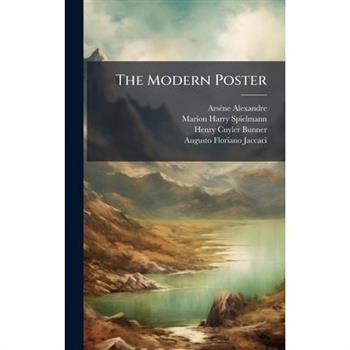


















![Annual American Exhibition [of] Paintings And Sculpture, Volumes 11-17 Annual American Exhibition [of] Paintings And Sculpture, Volumes 11-17](https://cdn.kingstone.com.tw/english/images/product/7651/9781024377651m.jpg?Q=b1a5e)
![Boston Painters, 1720-1940. [Exhibition Catalogue] Boston Painters, 1720-1940. [Exhibition Catalogue]](https://cdn.kingstone.com.tw/english/images/product/8640/9781024218640m.jpg?Q=39b58)
![Annual American Exhibition [of] Paintings And Sculpture, Volumes 11-17 Annual American Exhibition [of] Paintings And Sculpture, Volumes 11-17](https://cdn.kingstone.com.tw/english/images/product/3059/9781024373059m.jpg?Q=adc15)






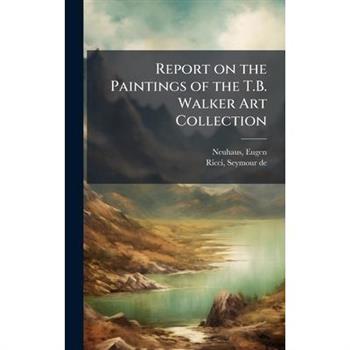

![Boston Painters, 1720-1940. [Exhibition Catalogue] Boston Painters, 1720-1940. [Exhibition Catalogue]](https://cdn.kingstone.com.tw/english/images/product/4918/9781024214918m.jpg?Q=2ea5d)


